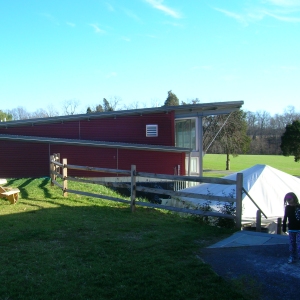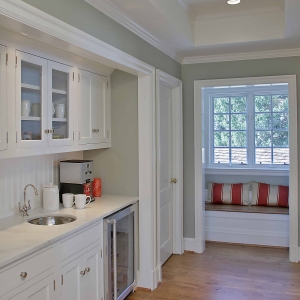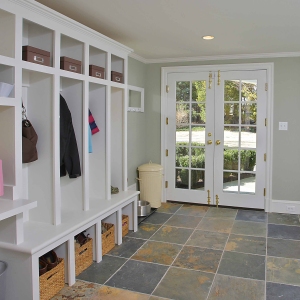Realizing a Valuable House
I’ve been involved with client based single family residential design for over nineteen years. I’ve worked on single room additions, five million dollar+ custom houses, and everything in-between. Each house has its own unique set of circumstances that need to be resolved or addressed. No two clients have the same set of circumstances or needs for their house. However, one issue is always prevalent- value. Usually value is associated with a monetary amount, but that’s not always true. Clients talk about wanting to add, increase, and maintain value… but typically they’re not sure what value they’re talking about or how it applies to their house.
So how does one address value in a house? It’s actually pretty simple; value in a house comes down to common sense and avoiding excess frill. Real value comes from things that make sense and enhance ones comfort and enjoyment of living in a house. A valuable house should employ as many of the following as possible:
1. Location/ Orientation house should be located within a reasonable proximity to the client’s daily needs. Ideally, the house should be in a mixed-use community that offers various amenities with-in walking distance. The less dependent on a vehicle the better for the environs and one’s health. A house should be orientated to take advantage of the sun, prevailing winds, and site specific features. In addition, the house interior should have a connection to the outdoors, both visually and physically.
2. Sustainable house should take advantage of both passive and active sustainable building practices. There are numerous exterior and interior strategies/ methods that can be employed to reduce a house’s impact on the environment. However, the best thing is to construct only the spaces necessary.
3. Floor Plan should meet your needs and how you live. Do not design for what you are told is needed to re-sell the home or include whatever the latest trend is, i.e. “man cave.” You don’t want rooms that you never use- not only will you have to furnish them but you will also have to heat and cool them- these monies are better spent elsewhere. Efficiency can be achieved by the minimization of the plan and simple building volumes.
4. Rooms/ Spaces all rooms and spaces should have ample daylight, sufficient applicable storage, and logically accommodate the intended furniture. Dedicated hallways and circulation spaces should be kept to a minimum. (*note entries to the house should be ‘spaces’ not just doors)
5. Kitchens + Bathrooms should be well organized, have efficient layouts, and provide ample storage- all of which can be achieved in a compact or moderately sized space.
6. Mudroom minimum should include a washable floor, floor drain, and utility sink with a hose attachment. Ideally each occupant of the house would have their own cubby/locker for storage. The mudroom should be located wherever the family foot traffic passes on a daily basis. (* pssst… pssst… it’s usually not the front door)
7. Garage cars are a reality that is not going away any time soon. However, a garage should not be the dominate element on a house. Ideally the garage should be set-back from the main elevation, or even better, if the site allows, the garage should be located on the side and underneath of a house.
8. Roof complicated gables, hips, gambrels, etc. can be very distracting to the overall design of a home- they’re even more difficult to flash, vent, and properly waterproof. A roof should be simple in design and shed water. (** shed water ** hint hint **)
9. Materials use low-maintenance long lasting materials.
10. Quality should take precedence over quantity. This applies to the entire house- overall size, rooms/ spaces, finishes, etc. Employ fewer elements executed to a higher degree of proficiency.
The most valuable houses are the ones located in mixed-use walkable communities. Ideally the house is close to the owner’s daily needs. Houses that rely on an efficiency of space and are well designed in simple forms and details. Houses designed to meet the needs of the owners, minimize the life-cycle costs of operating and maintaining the house, a house designed for you– these are characteristics of a valuable house.
** Notice I used ‘house’ and not ‘home’… a future post on that is in the works.





First of all, I agree with all of your statements and that means we share common values. I also believe that most of what you say can be backed up with objectivity or performance related data. However, as in all things architecture, there are personal values involved. It is impossible to change someone’s values, all we can do is lead the horse to water (and occasionally dunk its head to facilitate the drinking part). Good post.
Thanks Lee, I appreciate the comments. I agree, we can’t change ones values but hopefully we can away them a bit.
p.s. my “flat” roof does shed water – 1/2″/ft
Touché!
Lovely post 🙂
Thanks for reading and the kind words, I appreciate it!
Thanks!
Agreed! Location is so important. There are lots of fabulous houses that are situated in remote areas, but they are not tempting at all. I have chosen a home that is a very short walk from work and the local community hub. There is a bus stop outside. These features were essential to winkle me out of my other wonderfully walkable home.
Even though it is so convenient to the essentials, the home has been architecturally designed for maximum peace, privacy and views. Even though it is just on a modest section, you can’t see the neighbouring houses unless you really try. This home has sold me on the value of good architecture.
Thanks for reading and your comments, sounds like you’ve got a great house/location!